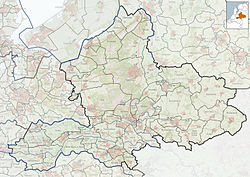
Ede is a municipality and a town in the centre of the Netherlands, in the province of Gelderland. As of 1 July 2021, Ede had 119,186 inhabitants.

Werkendam is a town and a former municipality in the southern Netherlands. The municipality, part of Land van Heusden en Altena, contained a large part of De Biesbosch area as is located in the province of North Brabant. On January 1sth 2019 it joined Woudrichem and Aalburg in the new municipality of Altena.

The National Socialist Movement in the Netherlands was a Dutch fascist and later Nazi political party that called itself a "movement". As a parliamentary party participating in legislative elections, the NSB had some success during the 1930s. Under German occupation, it remained the only legal party in the Netherlands during most of the Second World War.

Anton Adriaan Mussert was a Dutch politician who co-founded the National Socialist Movement in the Netherlands (NSB) in 1931 and served as its leader until the party was banned in 1945. As such, he was the most prominent Dutch fascist before and during World War II. Mussert collaborated with the German occupation government, but was granted little actual power and held the nominal title of Leider van het Nederlandsche Volk from 1942 onwards. In May 1945, as the war came to an end in Europe, Mussert was captured and arrested by Allied forces. He was charged and convicted of treason, and was executed in 1946.

Cornelis "Kees" van Geelkerken was a Dutch fascist political leader and Nazi collaborator.
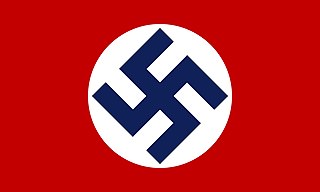
The National Socialist Dutch Workers Party was a minor Dutch Nazi party founded in 1931 and led by Ernst Herman van Rappard. Seeking to copy the fascism of others, notably Adolf Hitler, the group failed to achieve success and was accused by rivals such as the National Socialist Movement in the Netherlands (NSB) and the General Dutch Fascist League of being too moderate for a fascist movement.
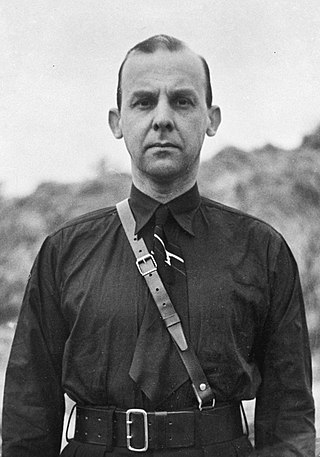
Meinoud Marinus Rost van Tonningen was a Dutch politician of the National Socialist Movement (NSB). During the German occupation of the Netherlands in World War II, he collaborated extensively with the German occupation forces. He was the husband of Florentine Rost van Tonningen.

Johannes Hendrik Feldmeijer was a Dutch Nazi politician and a member of the NSB.

George Wilhelm Kettmann or George Kettmann Jr. was a Dutch poet, writer, journalist and publisher who promoted Nazism in the Netherlands. With his wife, he founded the best known Dutch Nazi publishing house, De Amsterdamsche Keurkamer. Until 1941 he was editor in chief of Volk en Vaderland, the weekly journal of the National Socialist Movement in the Netherlands (NSB), the movement of Anton Mussert.
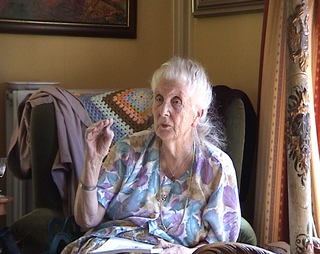
Florentine Sophie Rost van Tonningen was the wife of Meinoud Rost van Tonningen, the second leader of the National Socialist Movement in the Netherlands (NSB) and President of the National Bank during the German occupation (1941–1945). Because she continued to support and propagate the ideals of Nazism after World War II and the death of her husband, she became known in the Netherlands as the "Black Widow".
Operation Silbertanne was the codename of a series of executions that were committed between September 1943 and September 1944 during the German occupation of the Netherlands. The executions were carried out by a death squad composed of Dutch members of the SS and Dutch veterans of the Eastern Front.
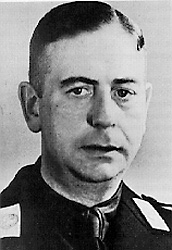
Jonkheer Daniël de Blocq van Scheltinga was a Dutch Nazi politician.

Ede Ulfert Staal was a Dutch singer-songwriter from the Northern province of Groningen who sang mainly in Gronings dialect.
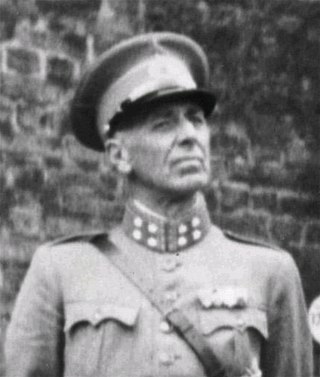
Hendrik Alexander Seyffardt was a Dutch general, who during World War II collaborated with Nazi Germany during the occupation of the Netherlands, most notably as a figurehead of the Dutch Legion, a unit of the Waffen-SS on the Eastern Front.
The Stichting Oud Politieke Delinquenten was a Dutch right-wing organization founded by and for formerly jailed and convicted war criminals, who had collaborated with the German occupiers during World War II. The SOPD was the first and the largest of the collaboratist organizations in the country, “numbering perhaps a hundred former internees.”
The Weerbaarheidsafdeling was the paramilitary arm of the National Socialist Movement in the Netherlands (NSB), the fascist political party that collaborated with the German occupiers of the Netherlands during World War II. The organization, roughly equivalent to the German SA, was founded in 1932 by Anton Mussert, co-founder of the NSB in 1931 and its leader until the end of the war. Members wore and marched in black uniforms and were thus called "blackshirts". In 1933 the Dutch government banned the wearing of uniforms, and the WA was disbanded in 1935 in order to forestall the Dutch government's banning it. In 1940, after the German invasion, the WA became openly active again, and more ruthless than before. They specialized in violent attacks, particularly on the Dutch Jewish population.
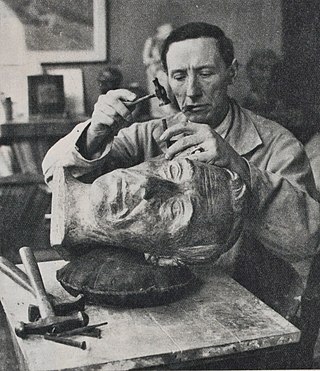
Christopher "Cris" Agterberg was a Dutch artist and ceramist.

Jacobus Johannes 'Jaap' Schrieke was a Dutch administrator, jurist and collaborator who served as Secretary-General of the Dutch Ministry of Justice during the German occupation of the Netherlands. He was also the brother of the Dutch jurist and politician Bep Schrieke who briefly served as minister of education during the fifth Colijn government in 1939.
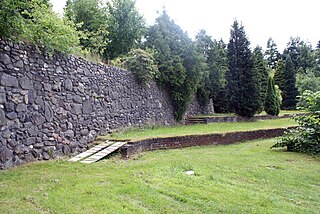
The Muur van Mussert is all that remains of a rally ground with buildings and monuments planned by Anton Mussert and his National Socialist Movement in the Netherlands (NSB) to house party meetings and hold national events to celebrate national-socialist thought in the Netherlands. The wall was built in 1938, on a plot of land the NSB had acquired near Lunteren in Gelderland, in the center of the country, and was inspired by the Nazi party rally grounds in Nuremberg.

Adriaan Nicolaas Johan van Hees was a Dutch actor and member of the National Socialist Movement in the Netherlands (NSB). Van Hees was trained in Amsterdam and Germany, and spent a few years in theater and film. He quit professional acting to join the NSB, giving speeches and overseeing the organization's theater division, arguing that the change he thought necessary in Dutch drama had to come from political revolution. He became depressed and suicidal when he discovered he was part Jewish; still, he tried to join the SS but was denied. After the war, he was banned from the stage for ten years, and sentenced to five years in prison.


